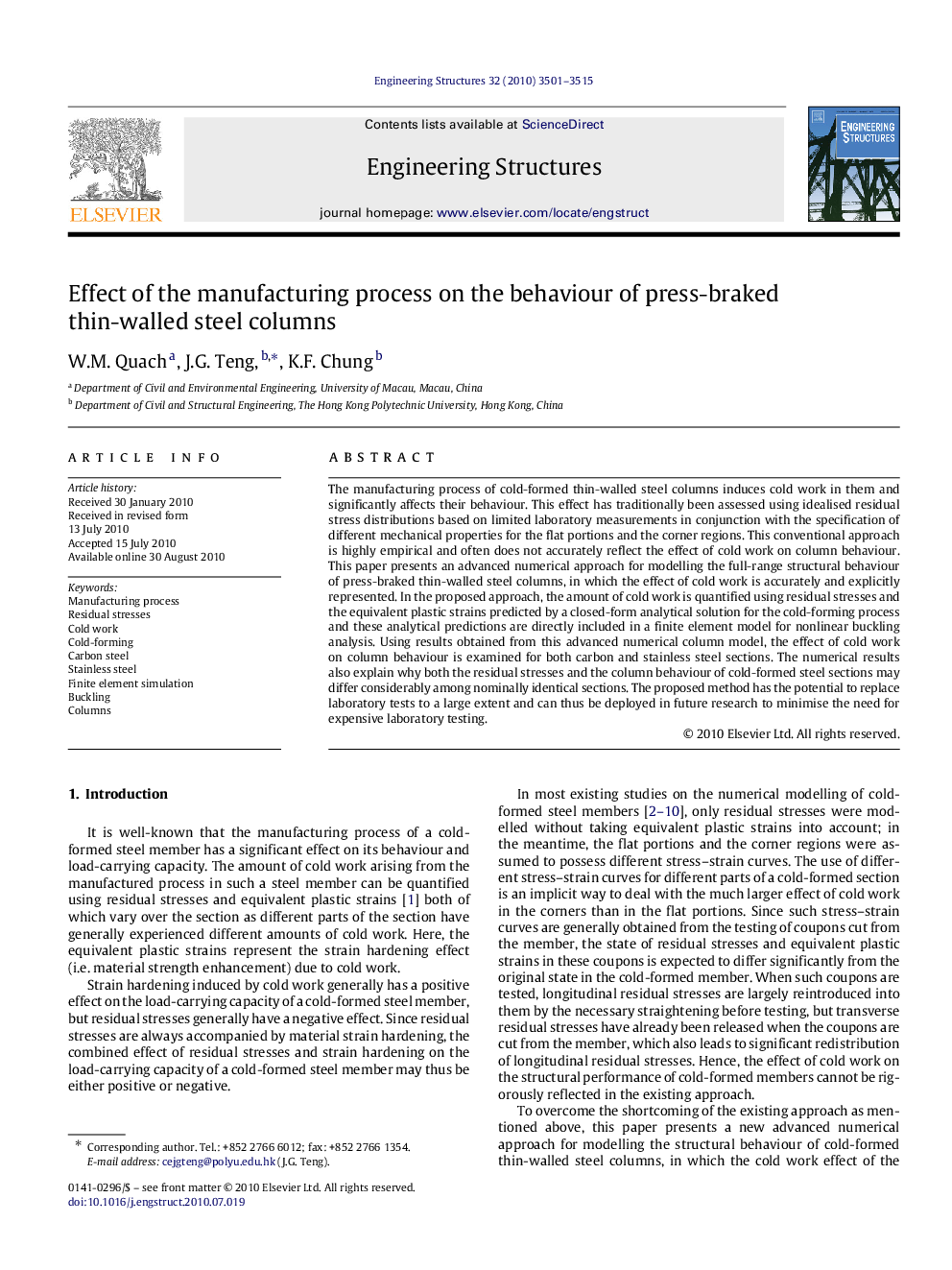| Article ID | Journal | Published Year | Pages | File Type |
|---|---|---|---|---|
| 267951 | Engineering Structures | 2010 | 15 Pages |
The manufacturing process of cold-formed thin-walled steel columns induces cold work in them and significantly affects their behaviour. This effect has traditionally been assessed using idealised residual stress distributions based on limited laboratory measurements in conjunction with the specification of different mechanical properties for the flat portions and the corner regions. This conventional approach is highly empirical and often does not accurately reflect the effect of cold work on column behaviour. This paper presents an advanced numerical approach for modelling the full-range structural behaviour of press-braked thin-walled steel columns, in which the effect of cold work is accurately and explicitly represented. In the proposed approach, the amount of cold work is quantified using residual stresses and the equivalent plastic strains predicted by a closed-form analytical solution for the cold-forming process and these analytical predictions are directly included in a finite element model for nonlinear buckling analysis. Using results obtained from this advanced numerical column model, the effect of cold work on column behaviour is examined for both carbon and stainless steel sections. The numerical results also explain why both the residual stresses and the column behaviour of cold-formed steel sections may differ considerably among nominally identical sections. The proposed method has the potential to replace laboratory tests to a large extent and can thus be deployed in future research to minimise the need for expensive laboratory testing.
